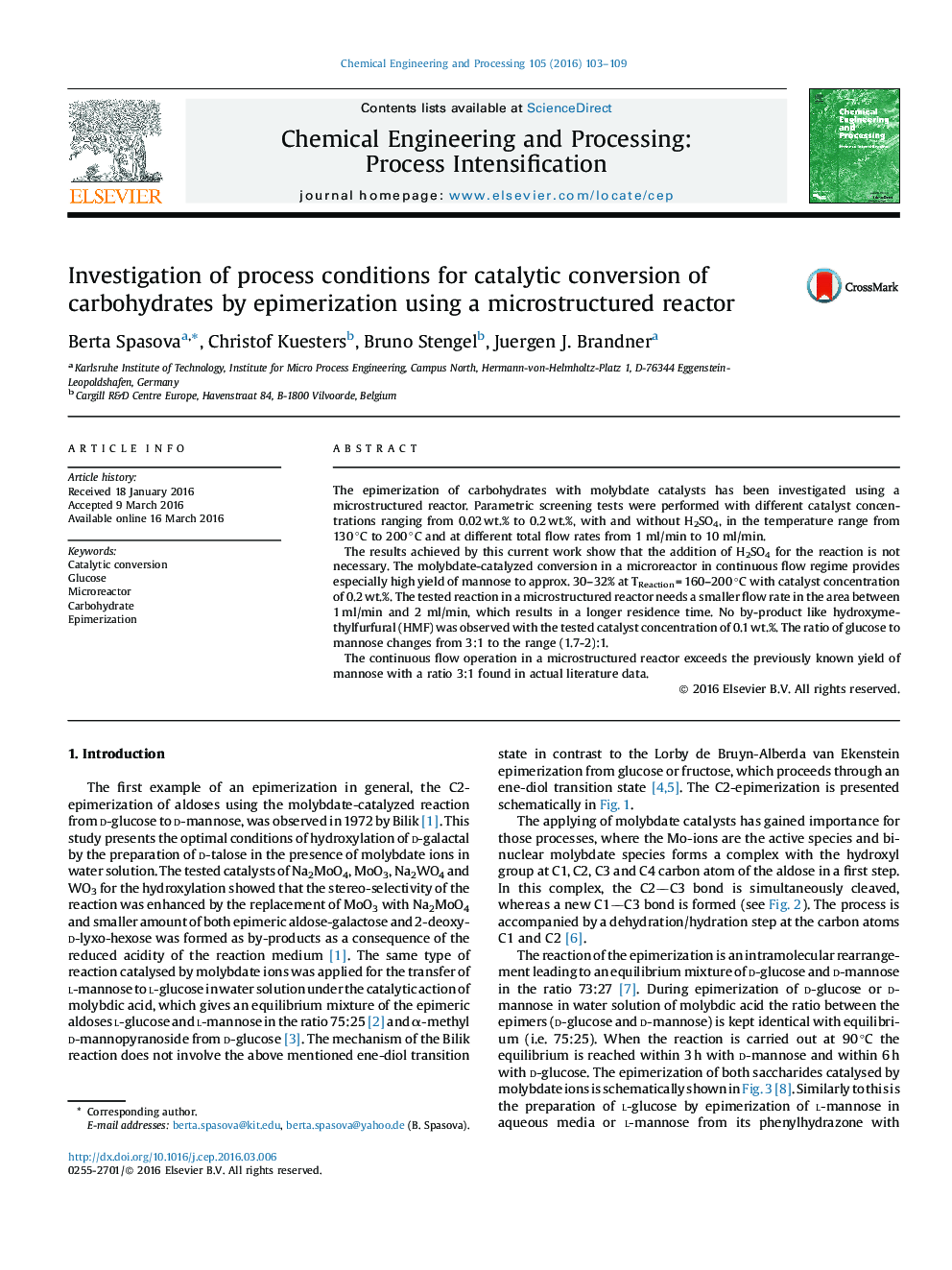| کد مقاله | کد نشریه | سال انتشار | مقاله انگلیسی | نسخه تمام متن |
|---|---|---|---|---|
| 686774 | 1460072 | 2016 | 7 صفحه PDF | دانلود رایگان |
• Catalytic conversion of carbohydrates by epimerization using a microstructured reactor was studied.
• The reaction was successful performed in continuous flow mode in a microreactor.
• With the study it could be shown that in continuous mode of operation, the reaction results exceed the previously known yield of mannose in accordance with the literature data for an established reaction.
• The process using microstructured equipment shows a higher productivity than currently used conventional process techniques.
• The current work shows the potential of future technical developments of microstructure-based processes for certain applications in food engineering.
The epimerization of carbohydrates with molybdate catalysts has been investigated using a microstructured reactor. Parametric screening tests were performed with different catalyst concentrations ranging from 0.02 wt.% to 0.2 wt.%, with and without H2SO4, in the temperature range from 130 °C to 200 °C and at different total flow rates from 1 ml/min to 10 ml/min.The results achieved by this current work show that the addition of H2SO4 for the reaction is not necessary. The molybdate-catalyzed conversion in a microreactor in continuous flow regime provides especially high yield of mannose to approx. 30–32% at TReaction = 160–200 °C with catalyst concentration of 0.2 wt.%. The tested reaction in a microstructured reactor needs a smaller flow rate in the area between 1 ml/min and 2 ml/min, which results in a longer residence time. No by-product like hydroxymethylfurfural (HMF) was observed with the tested catalyst concentration of 0.1 wt.%. The ratio of glucose to mannose changes from 3:1 to the range (1.7-2):1.The continuous flow operation in a microstructured reactor exceeds the previously known yield of mannose with a ratio 3:1 found in actual literature data.
Figure optionsDownload as PowerPoint slideDetailed construction of the microstructured reactor: (1) fluid inlet, (2) fluid outlet, (3) reactor top-side housing shell, (4) microstructured foil as reaction interlayer, (5) reactor bottom-side housing shell, and (6) heating connections.
Journal: Chemical Engineering and Processing: Process Intensification - Volume 105, July 2016, Pages 103–109
